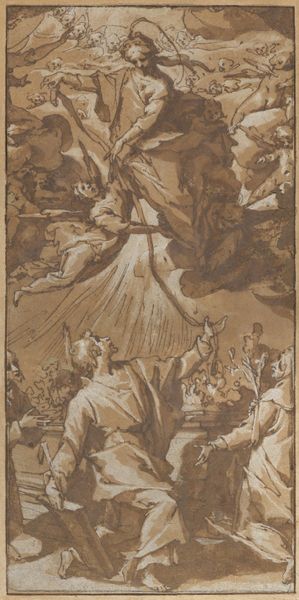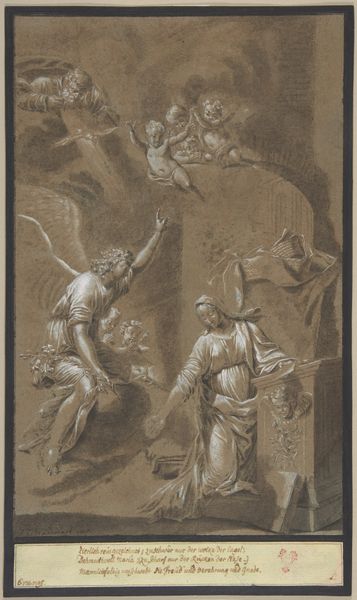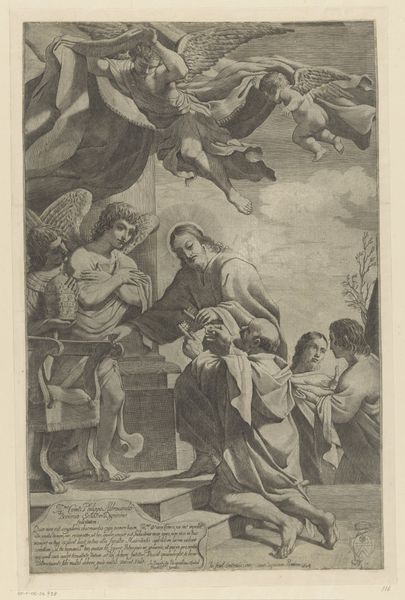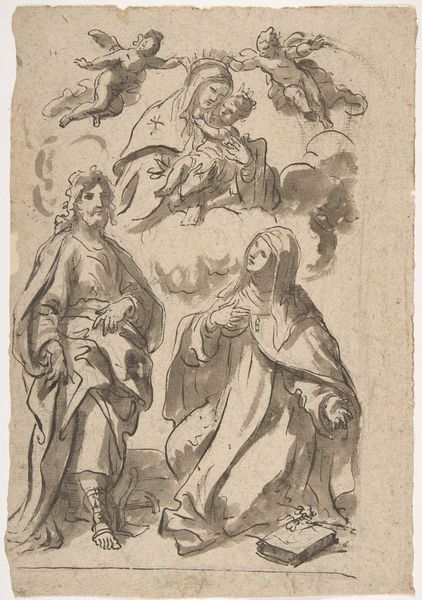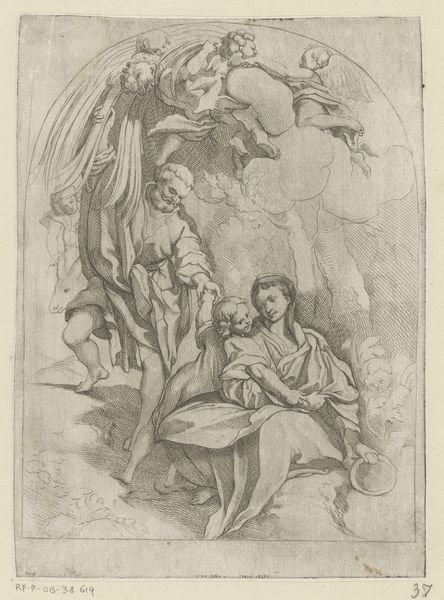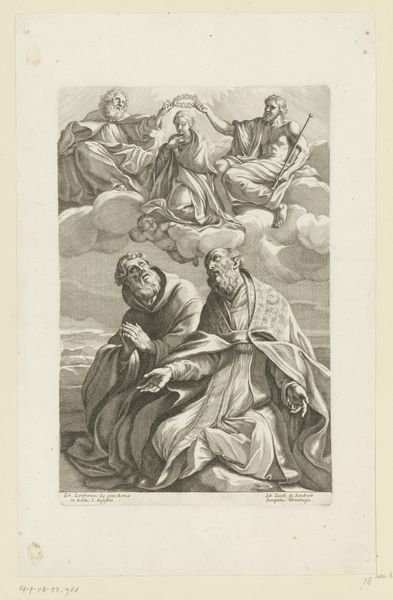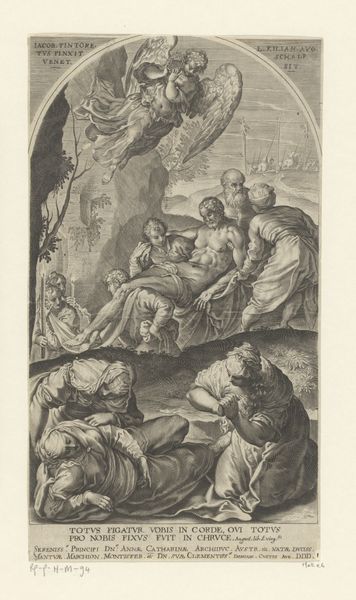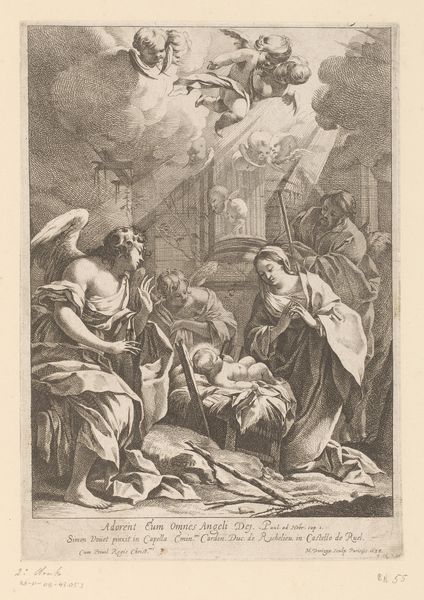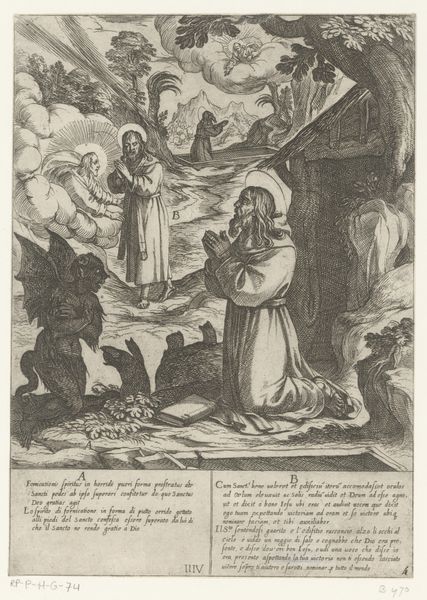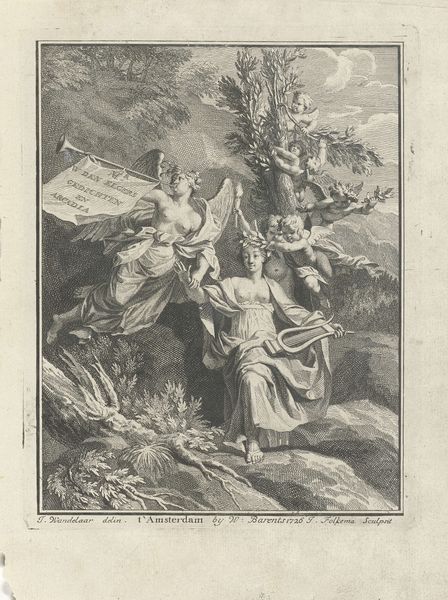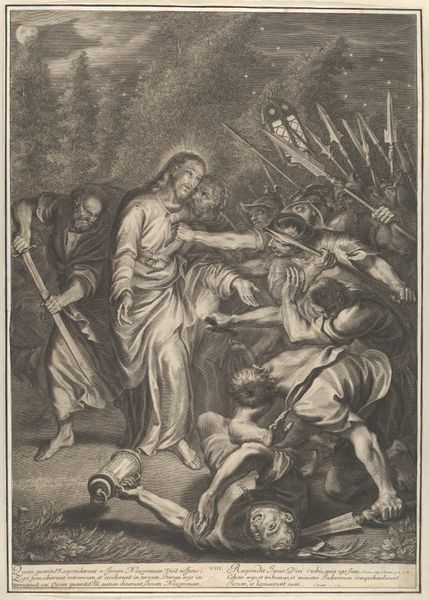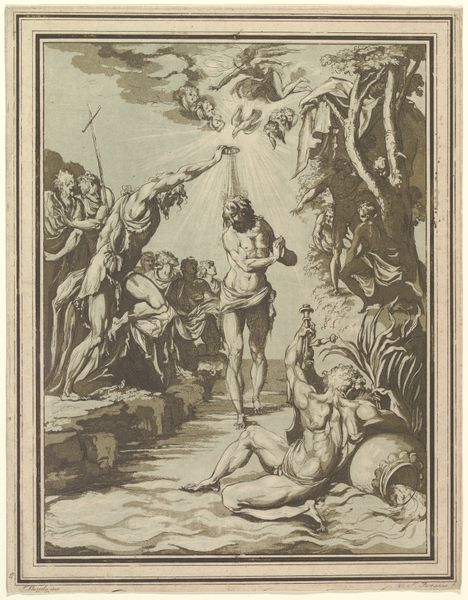
Dimensions: Sheet (Trimmed): 12 11/16 × 9 1/2 in. (32.2 × 24.1 cm)
Copyright: Public Domain
Curator: This engraving from 1780 is called "The Annunciation, after Poccetti." It's currently held at the Metropolitan Museum of Art. Editor: It’s quite ornate, even for the subject matter. I’m drawn to the way the light seems to emanate from the upper portions of the scene, casting shadows that define the forms. Curator: It’s crucial to understand how the representation of women during this era often served patriarchal narratives. Mary's submissive pose, kneeling before the angel, speaks to the expected role of women as obedient and virtuous. Editor: I agree. However, consider the printmaking process itself. The lines, so delicate yet so decisive, are achieved through a physical manipulation of metal, requiring a skilled artisan, often working within a specific guild system that held its own power dynamics. What stories of labour are also being represented in this artwork? Curator: A worthwhile point. And thinking of the distribution, engravings allowed for wider dissemination of religious imagery, influencing popular piety and reinforcing societal norms, for both genders, across different social strata. Who had access to these kinds of images really matters. Editor: Precisely. It was also the means by which many artists who wouldn't necessarily get to make paintings, gained work through more reproductive or decorative methods that allowed a freedom in their line work and interpretations that are of interest. Curator: Certainly. Understanding the socio-political context and gender dynamics of the late 18th century enhances our understanding of the work. Editor: But don't neglect the engraving process, as that can speak to broader historical currents around the industrialization of image-making in that same era. What this object represents extends beyond religious devotion. Curator: The piece invites us to critically assess the ways in which power, gender, and spirituality were intertwined. Editor: Indeed. There's a richness when considering material and gender when unpacking the meaning behind a Baroque piece like this.
Comments
No comments
Be the first to comment and join the conversation on the ultimate creative platform.
